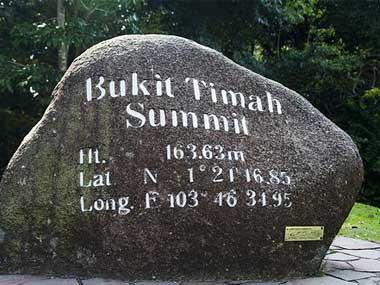Singapore's natural riches
Singapore is characterized by its densely populated and highly urbanized environment. However, what is less well known is the fact that this small Asian state is also renowned for its natural beauty. A familiar image may be of clustering skyscrapers but the 63 separate islands that make up Singapore harbor many ecological wonders. The Singaporean government has been quick to acknowledge the wealth of natural resources on its own doorstep.
The whole Singapore region was once teeming with rainforests. Centuries of civilization and settlement have severely curtailed this resource, to the extent that the Bukit Timah Reserve remains the only significant example (occupying 400 acres near the centre of Singapore). What this area lacks in size is more than made up for by natural heritage. This forest contains over 800 species of flowering plants and well over 500 species of fauna. In 2011 the reserve was declared an Association for Southeast Asian Nations (ASEAN) Heritage Park.
Speaking in the Singapore Parliament recently, Nominated MP Geh Min drew attention to a particular tree growing in Singapore's Botanic Garden – one whose importance to the scientific community considerably outweighs is inconspicuous position amongst Singapore's last remaining rainforests.
Back in 1992, a scientist from the USA's National Cancer Institute (NCI) dropped in on Singapore to discover if the Calophyllum tree grew in this environment. A sample had originally been found in Sarawak, although that site had been cleared by the time the researcher returned to the location. However, the species that he came across in the Botanic Gardens was similar – the Calophyllum lanigerum. The significance of this discovery lay in the fact that this plant contains Calanolide A, a compound which scientific researcher from the NCI have demonstrated to have an ability to prevent the onslaught of full-blown AIDS in individuals who have the HIV virus.
The potential life-prolonging elements inherent in this plant species have led to further clinical tests, with Dr Geh having described the 'magic chemical' present in Calophyllum lanigerum. "Our nature areas have, after long neglect, come to be valued for their recreational, heritage and even educational functions, all of which are difficult to quantify. But their potential scientific and economic value is still not properly recognised."

